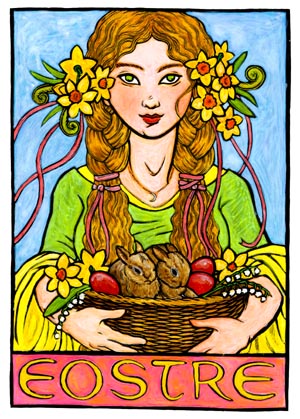 |
| From Co-Operative Food UK |
For my grandmother, buying chocolate was Ritual. While she no longer wore a best hat or wore gloves, it was easy to imagine her slipping them on as she prepared for an outing to buy chocolate.
 |
| Les Marais Chocolates, Santa Monica, CA |
Such attitudes have mostly fallen by the wayside, which makes sense when most chocolates are mass-produced, and sold in preselected mixes at the grocery store. This is not the way is should be, though, and American chocolate in particular has suffered for it. Hershey's is waxy. Most candy-bars more candy coating then cocoa. Chocolate risks become a condiment, with no more thought given then to a bottle of Heinz Ketchup.
In the meantime, our disconnection with where our chocolate comes from risks endangering chocolate all together. Problems like climate change and deforestation mean that the cost of plants like cacao, peanuts, and coffee grown in Africa are expected to soar in the near future, due to a combination of environmental factors and human rights issues.
| Chocolate-covered marshmallow from Theonista |
We, as the consumers, rarely can predict the rout that our chocolate (or other exotics like cane sugar or vanilla) took to reach us, but we can do our best on our end to support those who bring chocolate to our tables this Easter season.
Buy from local shops, like my grandmother did, keeping your money with small local businesses. If you don't know one in your area, try search functions like Yelp to find one. My favorite while living in Idaho was Florence's, a small mom and pop place. Don't be afraid to ask questions, either. The modern American business climate is often hard on small stores, who have trouble competing with large monopolies like WalMart and Costco even on specialty items. The small local business where you live might not know where it's cocoa comes from either...unless you ask questions. Chocolate often passes through many hands before it reaches you.
 |
| Schurra's Fine Confections |
Today, my family will be checking out a South Bay staple for the first time: Schurra's Fine Confections. While I'm not putting on a hat and gloves, I will be looking for a small local business that knows it's chocolate--from beginning to end--to buy my candy this Easter.
Update: I ended up making a holiday out of it and checking out three chocolate shops in South Bay today. Schurra's, which I listed above, was first. Classy shop. Not the most creamy chocolate, but the egg we tried was hand-made and much better then a similar peanut butter-filled item from the grocery store.
Next, we went down to Los Gatos and checked out the Powell's Sweet Shop(local chain). This is very much a candy store...every candy you can think of, with a little chocolate counter to round things out. Not what I was looking for today, but my kids loved it! At the very least, between here and the imports at a store like World Market, we should have Christmas amply covered. Also got myself a pack of the classic Choward's Violet Mints from the 30's.
Last was Chocolate Dream Box. Very, very good. I would go to Schurra's unless I was in the area, but theirs tasted like the best quality, highest chocolate content, and the individual chocolates in the case were dazzling.















